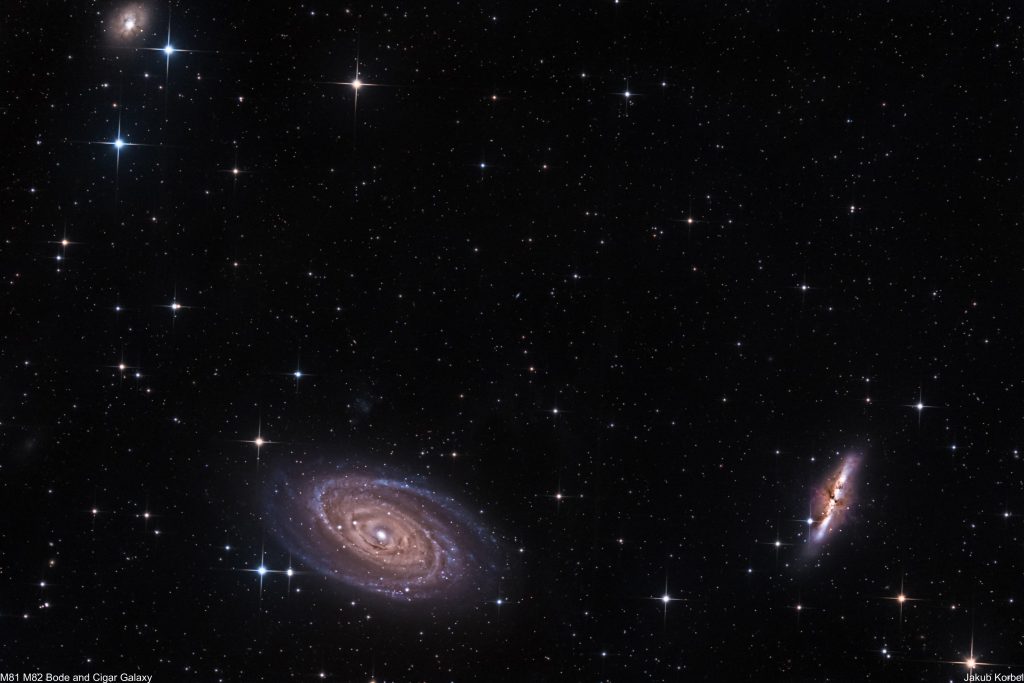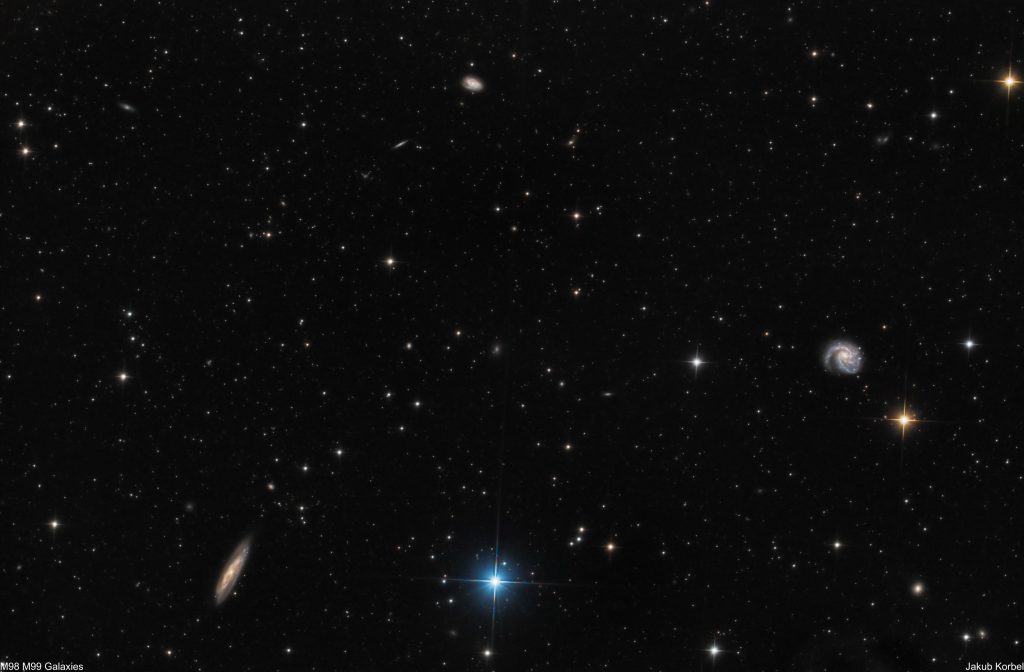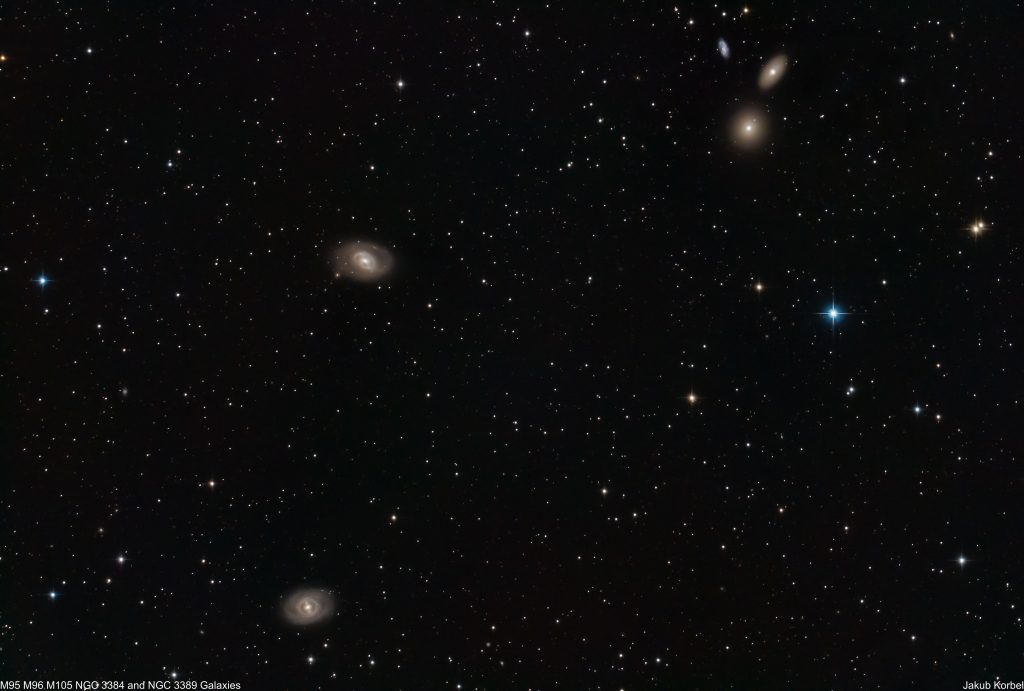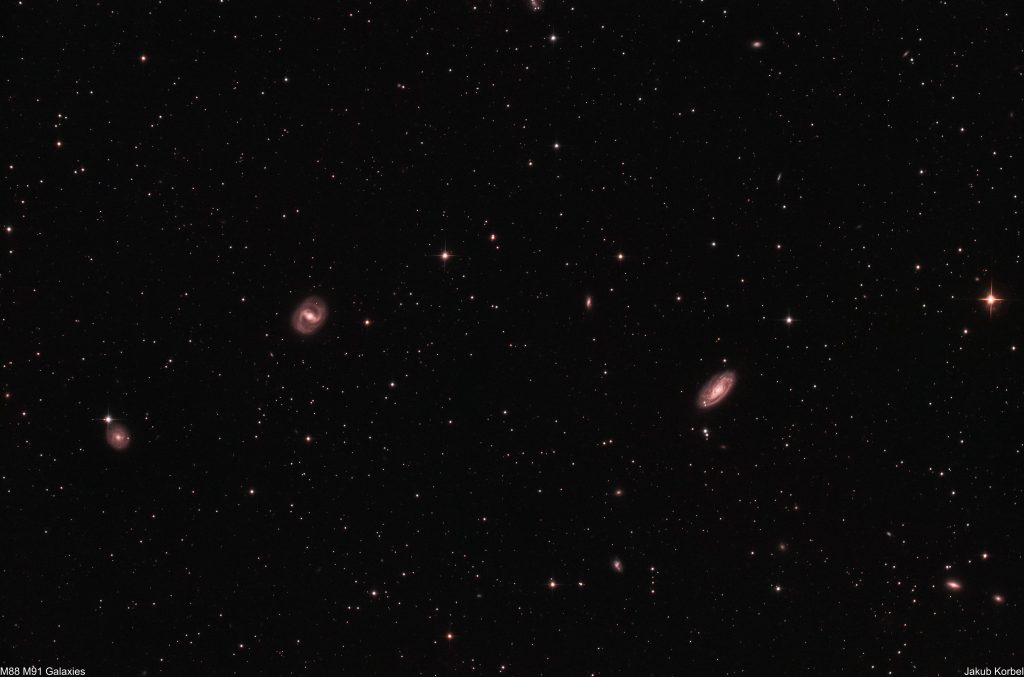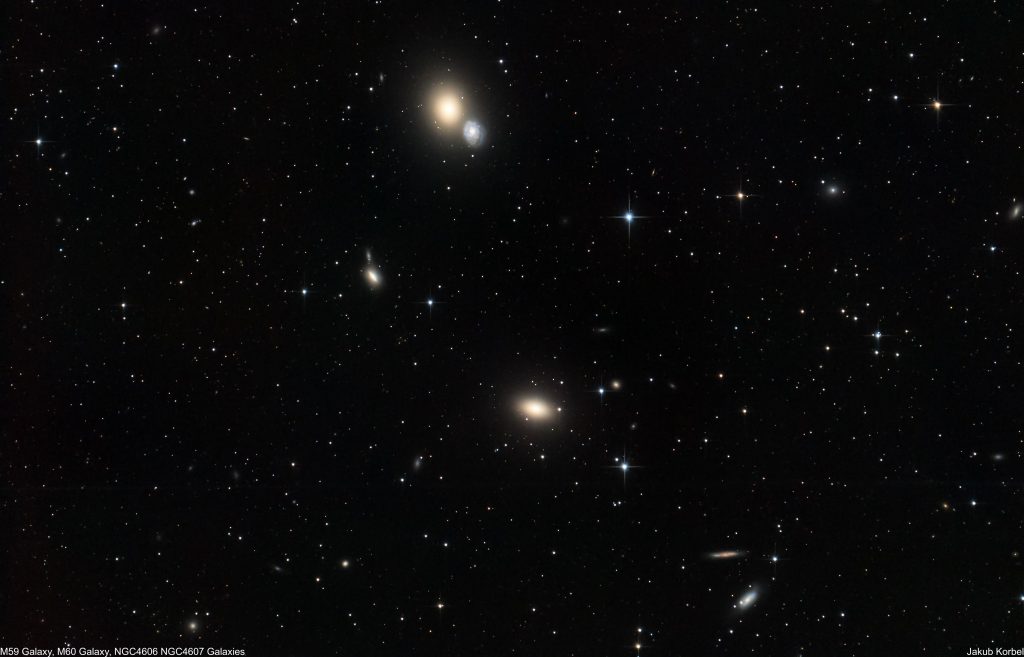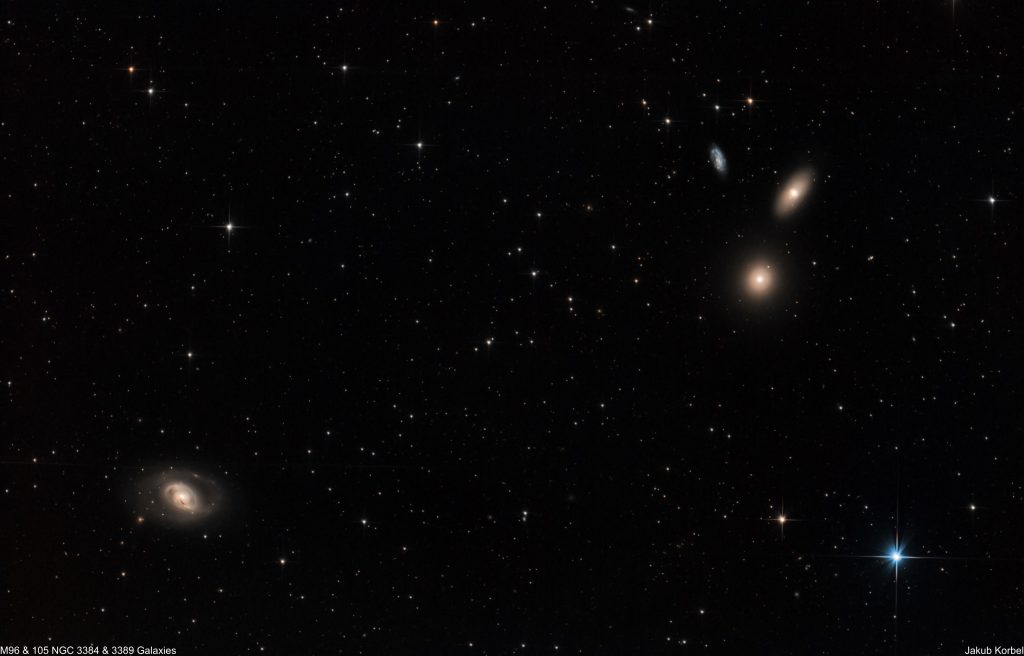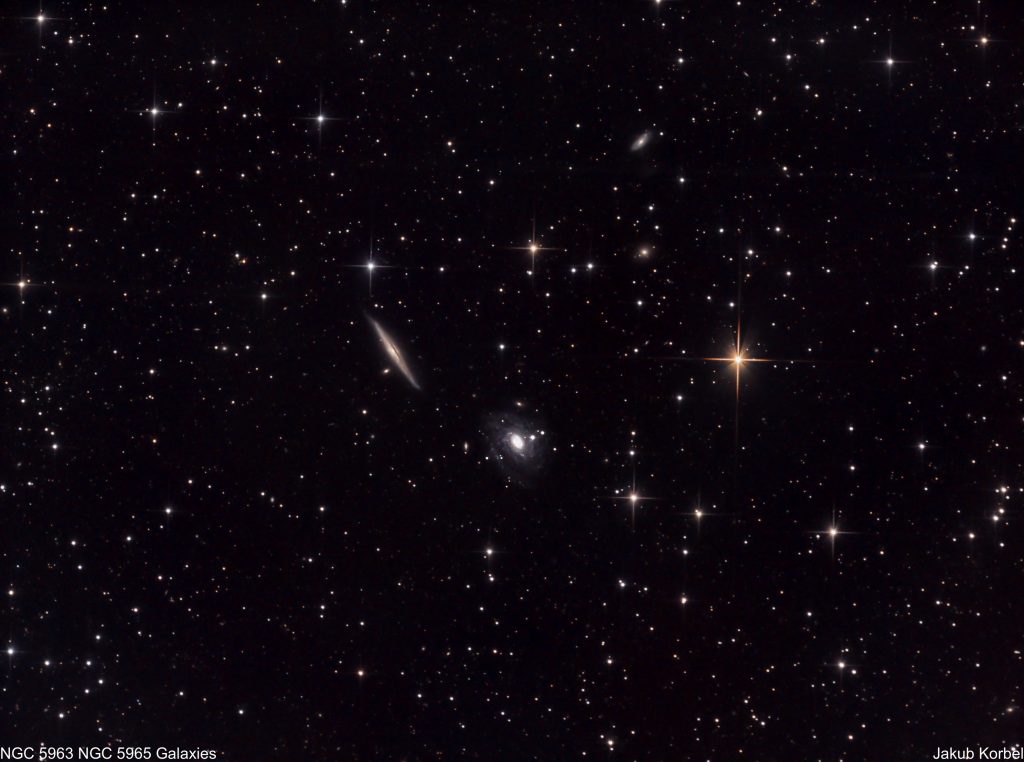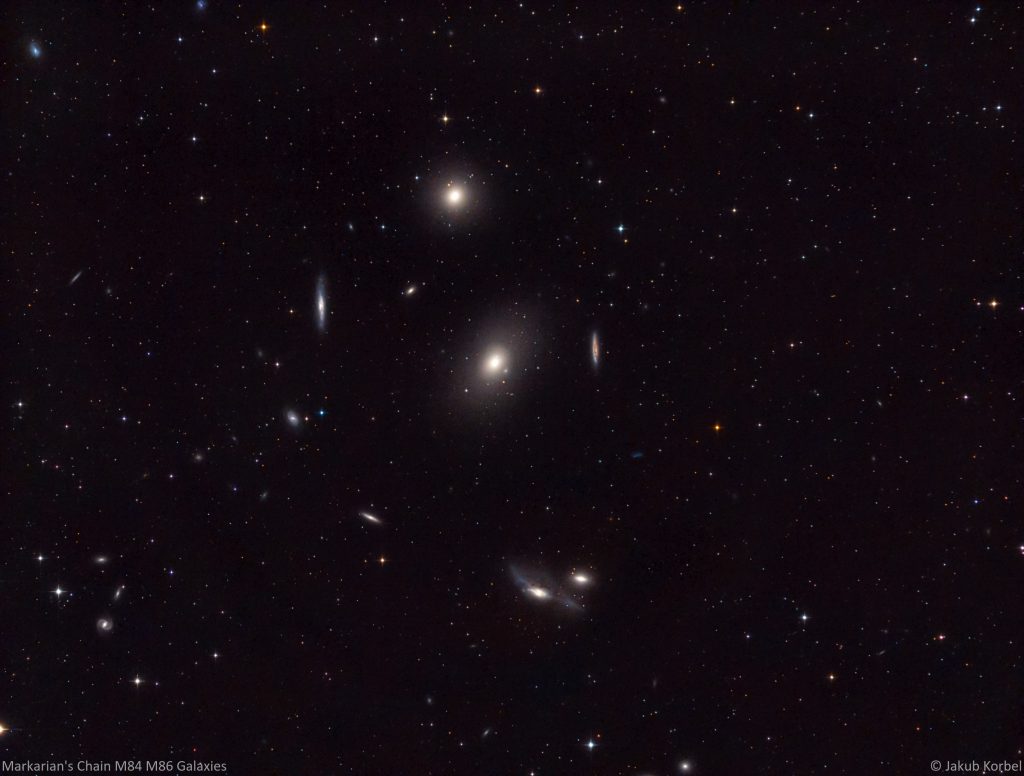Leo triplet is a group of galaxies in the constellation Leo. It contains galaxies NGC 3628 (upper left), Messier 65 (upper right), and Messier 66 (middle down). These galaxies are visible nicely in spring when the constellation Leo rises in the southern part of the sky.
I captured the picture shown here last year, but I haven’t had time to process it so far. It is interesting to compare the progress I made in astrophotography in the last few years. I made the very first picture of this group of galaxies in 2015 and for the first time, I used Pixinsight software for post-processing. The improvement over the freeware Deep Space Stacker was enormous. Similar boost I got recently when I installed BlurXterminator (Pixinsight plugin), which significantly improved the sharpness, but without any unrealistic artifacts.
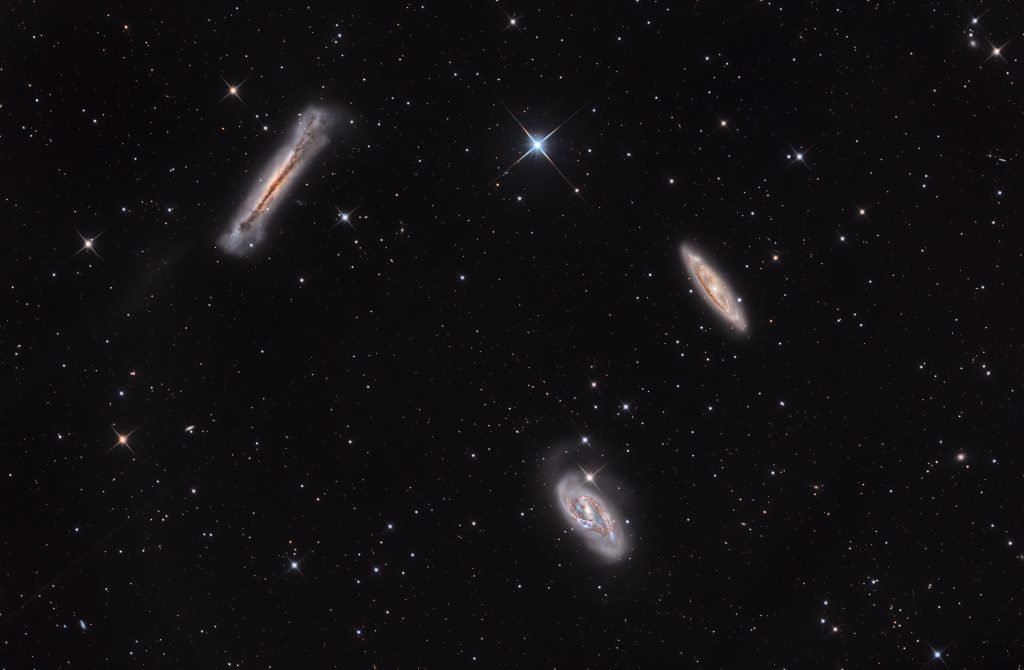
| Telescope | Newton 254/1000 mm |
| Aperture | 254 mm |
| Focal length | 950 mm |
| Mount | Gemini G53f |
| Autoguiding | ZWO 174MM, TS 60/240 mm |
| Camera | ZWO 2600MM @-10°C |
| Corrector | MaxField coma corrector |
| Filters | Antlia V-Pro LRGB |
| Exposure | L26x RGB15x 180s, Gain 100, bin 1×1, |
| Date | 2022-03-05 |

